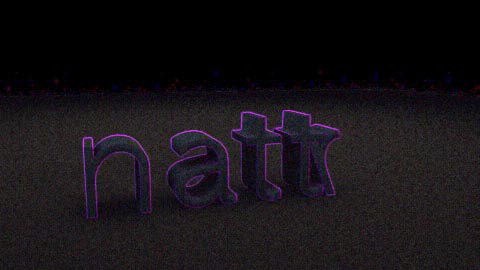| Review: SheerVideo
Pro codec for Mac OS X |
January, 2004
SheerVideo
Pro codec for Mac OS X
by
BitJazz inc.
SheerVideo is currently available
on Mac, for both Mac OS X and Mac OS 9 .
The PC+Windows edition will be released soon as well, and a PC+Linux
edition
is due out later this year.
Review by Graeme
Nattress
Video codecs - the clever software that
compress and decompress your video footage for a variety of uses,
come in many kinds. The two main kinds of codecs are those that
achieve smaller files by throwing away information (lossy codecs)
and those that preserve every bit of information (lossless codecs).
Lossy codecs are very common in the professional video world.
Digital video cameras use lossy codecs to achieve data rates
that allow them to fit full quality video onto convenient tape
formats, like miniDV for example. Lossless codecs, like the SheerVideo codec from
BitJazz which is the subject of this review find the most
use in a post production workflow where picture quality must
be maintained as the video gets edited, effects added and passed
from program to program.
BitJazz make some fairly serious claims
for their SheerVideo codec, but fortunately, these claims are
easy to test. They claim it will "save both time and space
in professional video and film production and archival, yet always
maintains absolutely perfect fidelity." I have traditionally
used the Apple "Animation" codec at 100% quality and
"Millions of Colors+" to create "uncompressed"
video, usually from 3D animation tiff sequences, in a production
workflow to maintain absolute picture quality and the essential
alpha channel for compositing work. It is in this environment
that I decided to compare SheerVideo to "Animation 100%".
In comparing the two lossless codecs, I also decided to try some
lossy codecs to see what difference they made in terms of picture
quality, file size, and playability. I have often used "photoJPEG"
codec at 100% quality in compressing 3D animation files for real-time
playback on slower machines or for smaller file sizes, and I
was curious to see how Apple's new Pixlet codec would also perform
in this environment.
The speed and file size testing consisted
of compressing a 200 frame tiff image sequence. The resolution
of the tiffs was 960 x 540. I used an 800mHz 17" LCD iMac
for the tests, compressing from and to the internal hard drive.
Lossless Codecs
200 frame 1/2 HD (960 x 540)
movie, to SheerVideo 56 seconds, 121MB
200 frame 1/2 HD (960 x 540) movie, to Animation+ 67 seconds,
223MB
Lossy Codecs (for comparison)
200 frame 1/2 HD (960 x 540)
movie, to Pixlet 91 seconds, 39MB
200 frame 1/2 HD (960 x 540) movie, to Photo-JPEG 46 seconds,
31MB
It's pretty obvious from the figures
that both of BitJazz's claims about their SheerVideo codec are
backed up by these results. It was the second fastest codec in
the test, knocking 11 seconds off the time to go out to Animation+,
and produced a file just over half the size.
I decided to examine the lossy codecs
as an experiment because they're not directly comparable and
they don't support alpha channels. It's also useful to see how
they perform in terms of picture quality as compared to lossless
codecs. To test for picture quality I used an old After Effects
trick where you place two clips on two tracks, and put the top
clip in difference mode. Any differences in them will show up
as colour on a black background. The brighter the colour, the
more the difference. To make it easier to see the differences,
I also used a levels filter on an adjustment layer to brighten
up the colours and make them more visible.
In the After Effects test, the SheerVideo
codec proved to be totally lossless, showing no differences at
all from the Animation+ 100% compression. Given that SheerVideo
is producing files of nearly half the size, this is an excellent
result and validates Bit Jazz's lossless claim.
Again, as part of my experiment, it's
interesting to see how the lossy codecs compared. Visually, they
both produced excellent results, very similar file sizes, although
the photoJPEG was twice as fast as compressing as Pixlet, which
was the slowest in the test. The photoJPEG also played back a
lot smoother, showing that Pixlet needs a lot more processing
power to work effectively. However, in the After Effects difference
test, the photoJPEG produced much superior results compared to
Pixlet.
Frame from Original Uncompressed video

Difference Result for Pixlet Codec

photoJPEG

Getting back to SheerVideo, I found the
installer quick and easy to use, and registration was easy. Most
importantly, the SheerVideo codec has a free "Reader"
so that you can play back SheerVideo encoded movies on any Mac
without having to buy another copy of the codec. The codec is
also easy to use. When exporting using the SheerVideo codec,
you have the option of letting it pick the most appropriate variant
according to it's analysis of the source video, or you can choose
from RGB[A] and a number of YUV options.
It's hard to review a product like SheerVideo
because there's so little to criticize. They have the free reader
available and they are working on PC and Linux versions, so compatability
will soon no longer be any issue at all, and the codec performs
flawlessly in testing, reducing file sizes and time to compress
by a significant margin. I recommend SheerVideo to anyone who
is currently using the Animation codec in their workflow.
copyright©2004 Graeme
Nattress
Graeme Nattress was born and grew up
in England, but has recently moved to Canada. He is married,
and a founder of a great 3D animation company in Ottawa, where
he invents and programs 3D graphics applications. In his spare
time he codes plugins for
Final Cut Pro, and is currently working with his wife on
a drama/documentary about a nuclear bunker in Canada set during
the Cold War Cuban Missile Crisis.